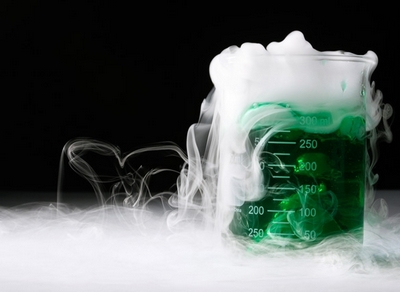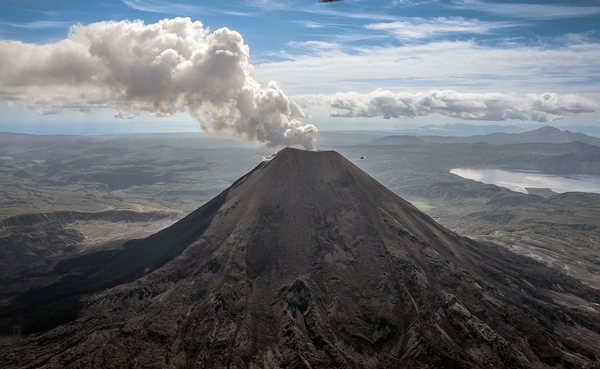Chemical Reactions

Content:
Definition
Chemical reactions (their properties, types, flow conditions, etc.), are the cornerstones of an interesting science called chemistry. Let’s find out what a chemical reaction is and what happens in a chemical reaction. So, the chemical reaction in chemistry is considered to be the conversion of one or several substances into other substances. At the same time, the nuclei of atoms do not change (unlike nuclear reactions). During chemical reactions there is a redistribution of electrons and nuclei, new chemical elements appear.
Examples
You and I are surrounded by chemical reactions. Moreover, we regularly make chemical reactions. For example, we light a match – it is a chemical reaction. Especially a lot of chemical reactions are made during cooking food.
There are a lot of chemical reactions in natural conditions: volcanic eruption, photosynthesis of leaves and trees, etc. Almost any biological process can be attributed to examples of chemical reactions.

Types with Examples
All chemical reactions can be divided into simple and complex. There are four types of simple chemical reactions:
- Combination reactions,
- Decomposition reactions,
- Single replacement reactions,
- Double replacement reaction
Combination Reaction
The reaction of a combination takes place when two or more reactants make one product. An example of a combination chemical reaction can be the heating of iron and sulfur powders, in which iron sulfide is formed from them – Fe + S = FeS. Another example of this reaction is the burning of simple substances such as sulfur or phosphorus in the air. (A similar reaction can also be called a thermal chemical reaction).
Decomposition Reaction
The decomposition reaction is the opposite of the combination reaction. In decomposition reactions, a single substance breaks down into two or more simpler substances. A simple example of a chemical decomposition reaction can be a decomposition of chalk, during which quicklime and carbon dioxide are formed from the chalk itself.
Single Replacement Reactions
The single replacement reaction is carried out in the interaction of a simple substance with a complex. Let us give an example of the single replacement reaction: if we drop a steel nail into a liquid with copper sulfate, then in the course of this simple chemical experiment we’ll get iron sulfate (iron will kick out copper from salt). The equation of such a chemical reaction will look like this:
Fe+CuSO4→ FeSO4+Cu
Double Replacement Reaction
The double replacement reaction takes place only between complex substances, during which they change their parts. Neutralization of acid by bile is a good example of the double replacement reaction
NaOH+HCl→ NaCl+Н2О
This is how the chemical equation of this reaction looks like. The hydrogen ion from the HCl compound exchanges sodium ion from the NaOH compound. The consequence of this chemical reaction is the formation of sodium chloride.
This is the simple definition and examples of different types of chemical reactions:
Combination – A + B —-> AB
Decomposition – AB —-> A + B
Single Replacement – A + BC —-> B + AC
Double Displacement – AB + CD —-> AD + CB
Physical and Chemical Changes
We can judge whether the chemical reaction between the reagents was made or not according to physical and chemical changes. We’ll give examples of physical and chemical changes during chemical reactions. So, what changes during a chemical reaction?
- Discoloration (for example, light iron is covered with brown bloom in humid air, as a result of the chemical reaction of the interaction of iron and oxygen).
- Deposition of sediment (if carbon dioxide is suddenly passed through a lime mortar, then we’ll get a precipitate of white insoluble calcium carbonate precipitate).
- Gas evolution (if you drip on baking soda the citric acid, you’ll receive carbon dioxide emission).
- Formation of weakly dissociated substances (all reactions that produce water).
- Glowing of liquid (an example can be reactions occurring with a solution of luminol, which emits light during chemical reactions).
In general, it is difficult to say which changes are basic. It man be different physical and chemical changes for different substances and different reactions.
What is Rate of Reaction?
The rate of a chemical reaction is usually understood as the change in the amount of one of the reactants per unit of time. Moreover, the rate of chemical reaction is always positive.
Factors of the rate of a chemical reaction include:
- the nature of the reactants,
- the presence of a catalyst,
- temperature,
- pressure,
- the surface area of the reactants.
All of them have the most direct influence on the rate of a chemical reaction.
Reaction Equilibrium
Chemical equilibrium is a state of a chemical system in which several chemical reactions take place and the rates in each pair of direct and reverse reactions are equal to each other. The equilibrium constant of a chemical reaction is distinguished – this is the value that determines for a given chemical reaction the ratio between the thermodynamic activities of the starting materials and products in the state of chemical equilibrium. Knowing the equilibrium constant, chemists can determine the direction of the chemical reaction.
Conditions for the Occurrence
It is necessary to create appropriate conditions to start the chemical reaction:
- Bringing substances into close contact.
- Heating substances to a certain temperature (the temperature of the chemical reaction must be appropriate).
References and Further Reading
- IUPAC, Compendium of Chemical Terminology, 2nd ed. (the “Gold Book”) (1997). Online corrected version: (2006–) “chemical reaction”. doi:10.1351/goldbook.C01033
- Weyer, J. (1973). “Neuere Interpretationsmöglichkeiten der Alchemie”. Chemie in Unserer Zeit. 7 (6): 177–181. doi:10.1002/ciuz.19730070604.
- Friedman, Leonard J.; Friedman, Samantha J. (2008). The History of the Contact Sulfuric Acid Process (PDF). Boca Raton, Florida: Acid Engineering & Consulting, Inc.
- Stranges, Anthony N. (2000). “Germany’s synthetic fuel industry, 1935–1940”. In Lesch, John E. (ed.). The German Chemical Industry in the Twentieth Century. Kluwer Academic Publishers. p. 170. ISBN 978-0-7923-6487-0.
- Brock, pp. 34–55
- Brock, pp. 104–107
- Myers, Richard (2009). The Basics of Chemistry. Greenwood Publishing Group. p. 55. ISBN 978-0-313-31664-7.
- IUPAC, Compendium of Chemical Terminology, 2nd ed. (the “Gold Book”) (1997). Online corrected version: (2006–) “chemical reaction equation”. doi:10.1351/goldbook.C01034
- Corey, E.J. (1988). “Robert Robinson Lecture. Retrosynthetic thinking?essentials and examples”. Chemical Society Reviews. 17: 111–133. doi:10.1039/CS9881700111.
- IUPAC, Compendium of Chemical Terminology, 2nd ed. (the “Gold Book”) (1997). Online corrected version: (2006–) “elementary reaction”. doi:10.1351/goldbook.E02035

Author: Pavlo Chaika, Editor-in-Chief of the journal Poznavayka
When writing this article, I tried to make it as interesting and useful as possible. I would be grateful for any feedback and constructive criticism in the form of comments to the article. You can also write your wish/question/suggestion to my mail pavelchaika1983@gmail.com or to Facebook.

